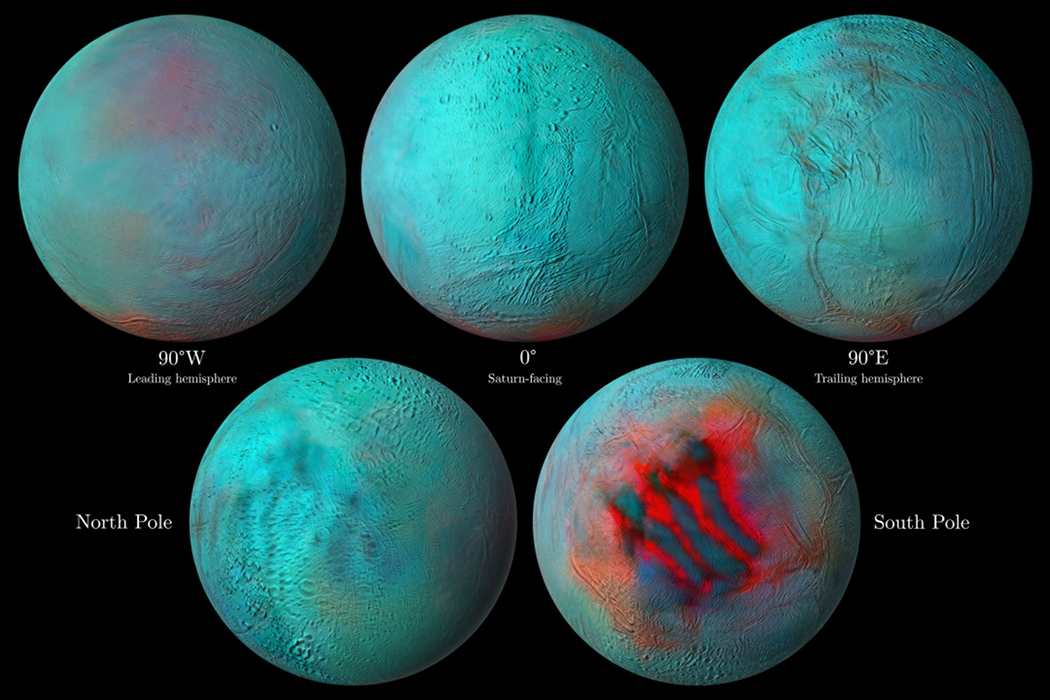Astronomy Picture of the Day
Discover the cosmos! Each day a different image or photograph of our fascinating universe is featured, along with a brief explanation written by a professional astronomer.
Image Credit: VIMS Team, SSI, U. Arizona, U. Nantes, CNRS, ESA, NASA
Explanation: One of our Solar System's most tantalizing worlds, icy Saturnian moon Enceladus appears in these detailed hemisphere views from the Cassini spacecraft. In false color, the five panels present 13 years of infrared image data from Cassini's Visual and Infrared Mapping Spectrometer and Imaging Science Subsystem. Fresh ice is colored red, and the most dramatic features look like long gashes in the 500 kilometer diameter moon's south polar region. They correspond to the location of tiger stripes, surface fractures that likely connect to an ocean beneath the Enceladus ice shell. The fractures are the source of the moon's icy plumes that continuously spew into space. The plumes were discovered by by Cassini in 2005. Now, reddish hues in the northern half of the leading hemisphere view also indicate a recent resurfacing of other regions of the geologically active moon, a world that may hold conditions suitable for life.
Tomorrow's picture: pixels in space
Authors & editors: Robert Nemiroff (MTU) & Jerry Bonnell (UMCP)
NASA Official: Phillip Newman Specific rights apply.
NASA Web Privacy Policy and Important Notices
A service of: ASD at NASA / GSFC
& Michigan Tech. U.
This is an automated email. If you notice any problems, just send me a note at gtracy@gmail.com. You can add and remove email addresses to this distribution list here, https://apodemail.org.Unsubscribe

No comments:
Post a Comment